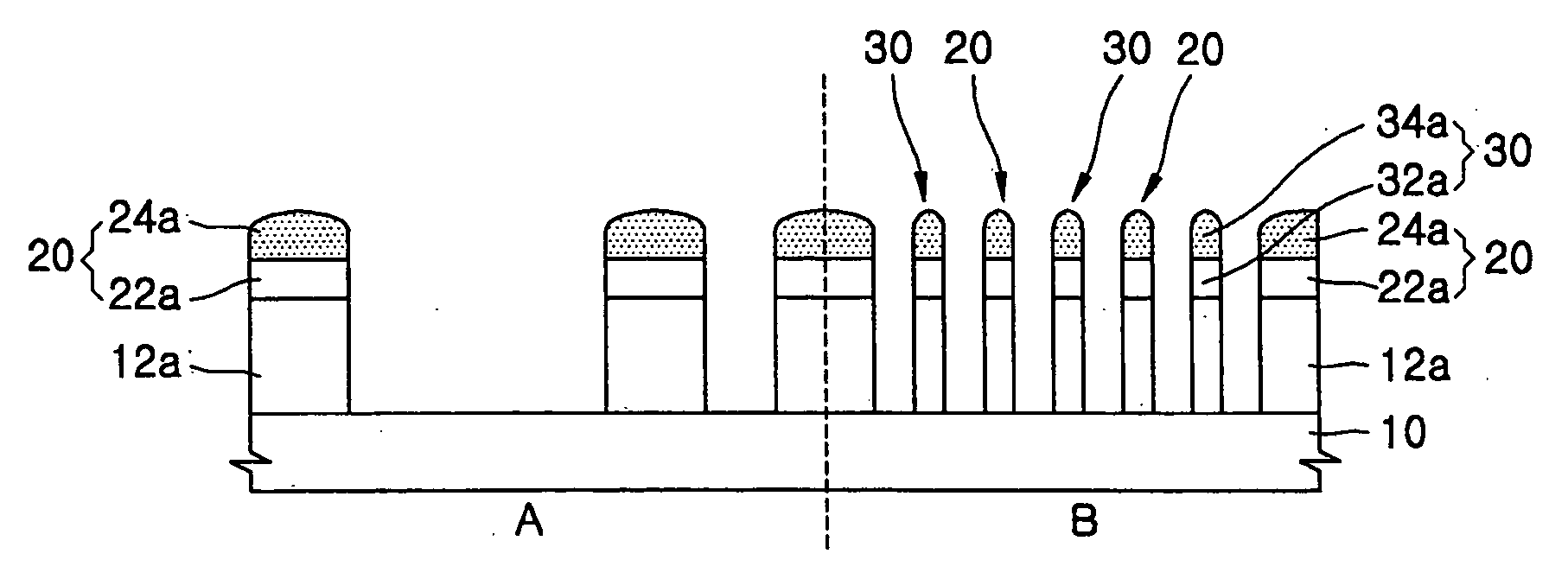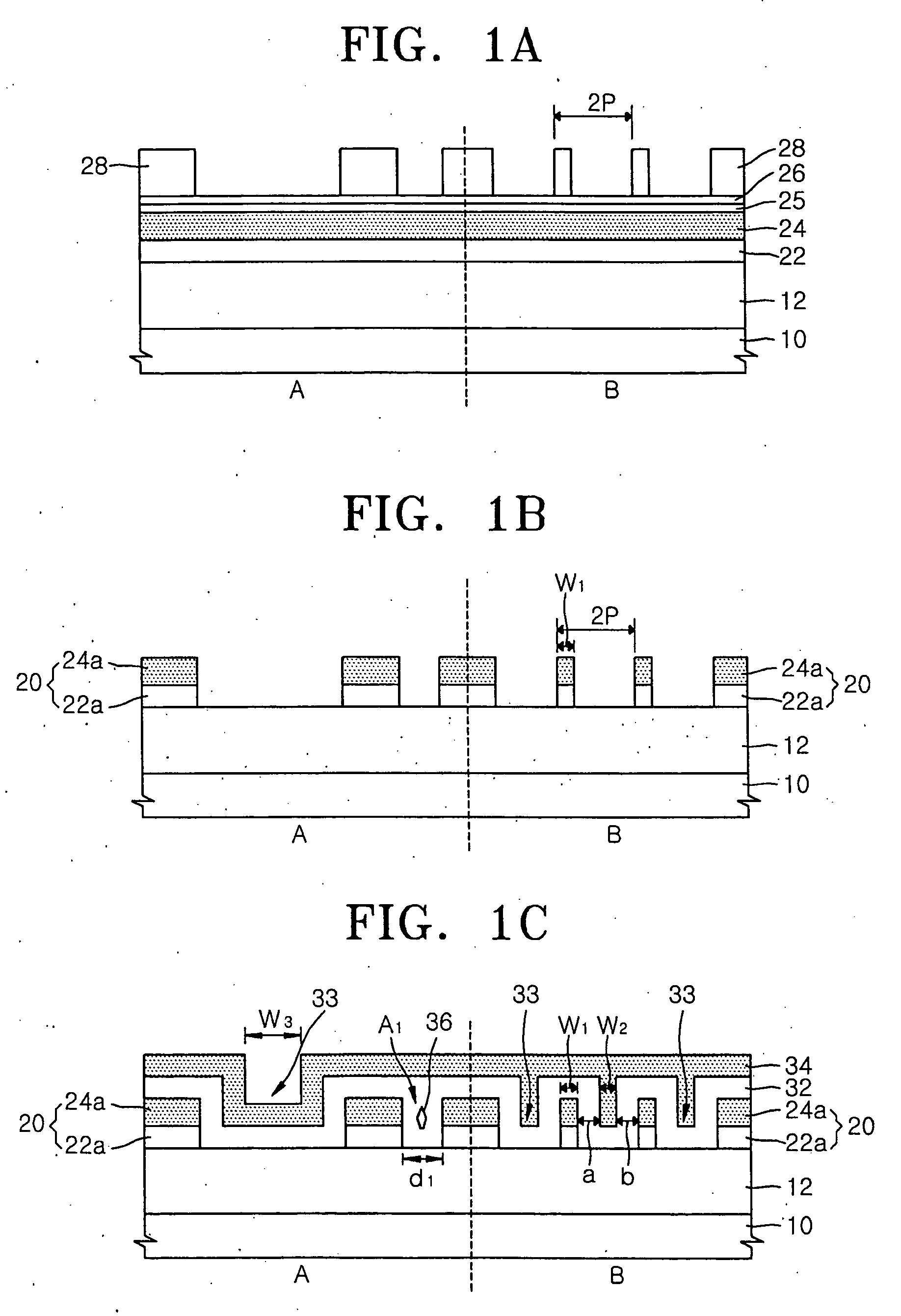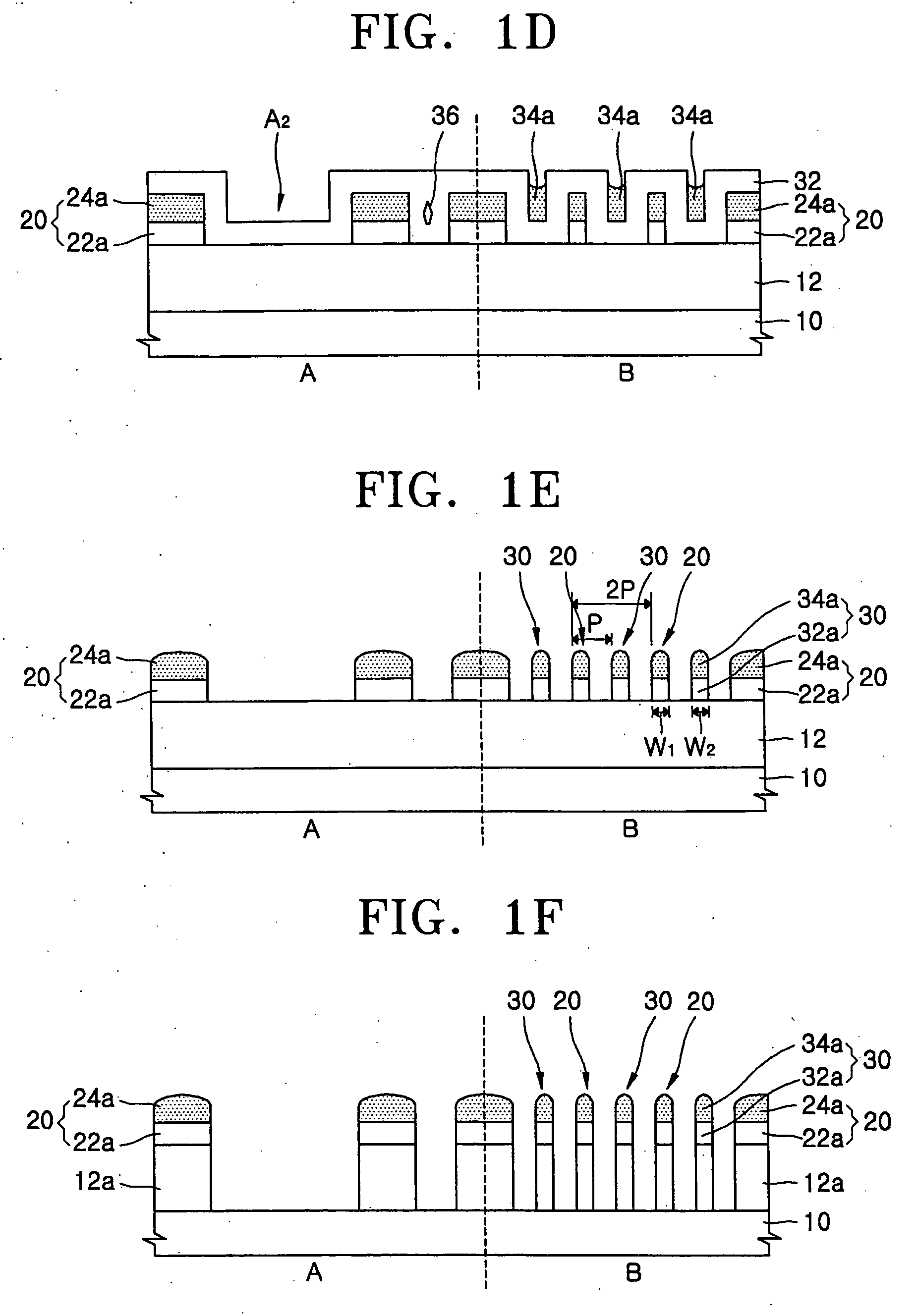Method of forming pattern using fine pitch hard mask
a technology of hard mask and pattern, applied in the direction of semiconductor/solid-state device manufacturing, basic electric elements, electric apparatus, etc., can solve the problems of increasing difficulty in forming sufficiently fine patterns, difficult to remove spacer patterns, and general non-uniform thickness of each one of a paired set of spacers formed on the sidewalls of a particular pattern, etc., to achieve the effect of overcomplicating resolution limitations
- Summary
- Abstract
- Description
- Claims
- Application Information
AI Technical Summary
Benefits of technology
Problems solved by technology
Method used
Image
Examples
Embodiment Construction
[0023]FIGS. 1A and 1F are cross-sectional views of an exemplary substrate on which fine patterns are formed using fine pitch hard mask patterns provided by one embodiment of the invention.
[0024] Referring to FIG. 1A, an etch target layer 12, a first mask layer 22 and a second mask layer 24 are sequentially formed on a substrate 10. The etch target layer 12 may be formed from various materials depending on the particular use of the patterns. For instance, when defining an active region on a semiconductor substrate, the etch target layer 12 may be formed of silicon. When forming a gate electrode, the etch target layer 12 may be formed of a conductive material, such as doped polysilicon or a stacked structure including doped polysilicon and a metal silicide. When forming a bit line, the etch target layer 12 may be formed of a metal or metal alloy, such as tungsten or aluminum.
[0025] The first mask layer 22 serves as a buffer for obtaining a uniform thickness of the second mask layer ...
PUM
 Login to View More
Login to View More Abstract
Description
Claims
Application Information
 Login to View More
Login to View More - R&D
- Intellectual Property
- Life Sciences
- Materials
- Tech Scout
- Unparalleled Data Quality
- Higher Quality Content
- 60% Fewer Hallucinations
Browse by: Latest US Patents, China's latest patents, Technical Efficacy Thesaurus, Application Domain, Technology Topic, Popular Technical Reports.
© 2025 PatSnap. All rights reserved.Legal|Privacy policy|Modern Slavery Act Transparency Statement|Sitemap|About US| Contact US: help@patsnap.com



